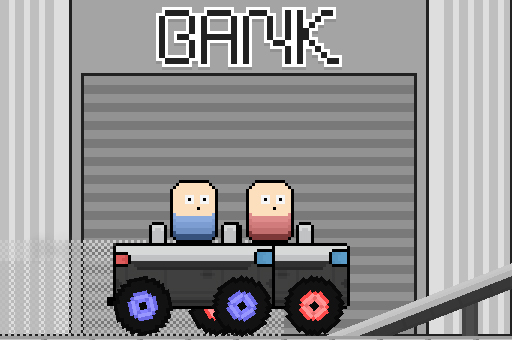HTML5 games have transformed the gaming industry, offering a seamless and versatile way to create and play games directly through web browsers. Unlike traditional games that often depend on specialized hardware or software installations, HTML5 games provide an instant gaming experience accessible to anyone with a browser. This shift has made them a favorite among developers and players alike.
This article will explore what HTML5 games are, how they are developed, who they cater to, and the unique benefits they bring to both gamers and website owners. Additionally, we’ll answer five commonly asked questions to deepen your understanding of this fascinating topic.
What Are HTML5 Games?
HTML5 games are interactive games built using HTML5, the fifth and latest version of the HyperText Markup Language (HTML). These games leverage a combination of web technologies, including CSS for styling, JavaScript for functionality, and WebGL for advanced graphics rendering.
Unlike traditional Flash-based games, HTML5 games are platform-independent and can run on virtually any modern web browser. This makes them highly accessible and eliminates the need for plugins or downloads.
Features of HTML5 Games:
- Device Compatibility: HTML5 games work seamlessly across desktops, tablets, and smartphones.
- Performance Efficiency: They are lightweight, ensuring quick loading times and smooth gameplay.
- Offline Functionality: With local storage capabilities, some games can be played offline.
- Interactive Graphics: WebGL and Canvas APIs enable high-quality 2D and 3D visuals.
How HTML5 Games Are Developed
The development process of HTML5 games involves various steps, from ideation to deployment. Here’s how it’s done:
1. Concept Development
The first step is crafting a clear idea for the game. Developers decide on the genre (e.g., puzzle, action, or simulation), gameplay mechanics, and story elements.
2. Choosing the Right Tools
Developers use specialized frameworks and libraries to simplify the coding process. Some popular tools include:
- Phaser: Perfect for 2D games.
- Babylon.js: A robust framework for creating immersive 3D games.
- Cocos2d-JS: Ideal for cross-platform game development.
3. Designing Game Assets
Game assets include visuals, characters, backgrounds, and sound effects. Developers often use design software like Adobe Photoshop, Blender, or GIMP to create these elements.
4. Writing the Code
The heart of any game lies in its code, written using:
- HTML5: For structuring the game environment.
- JavaScript: For handling interactivity and game logic.
- CSS: To style the game interface.
5. Testing Across Devices
Once the game is developed, it undergoes rigorous testing on various devices and browsers to ensure a smooth experience.
6. Publishing and Monetization
Games are hosted on servers and made accessible via URLs. Developers often monetize their games through ads, in-game purchases, or licensing.
Why HTML5 Games Are Gaining Popularity
HTML5 games are becoming increasingly popular due to their ease of access and versatility. Here’s why they’re a hit:
- No Installation Required
Players can start gaming instantly without downloading or installing software. - Cross-Browser Support
These games run on all major web browsers, ensuring a wide reach. - Easy to Update
Developers can roll out updates instantly without requiring players to download new versions. - Interactive Learning
HTML5 games are used in education to create fun and engaging learning experiences. - Global Reach
Since they’re browser-based, HTML5 games can be accessed by anyone worldwide.
Who Can Enjoy HTML5 Games?
HTML5 games cater to diverse audiences, making them suitable for:
- Children
Educational games, memory puzzles, and coloring activities appeal to young minds. - Teenagers
Action-packed multiplayer games and strategy-based challenges attract teens. - Adults
Casual games, word puzzles, and brain teasers are ideal for adults seeking entertainment during breaks. - Educators
Teachers use HTML5 games to make lessons more interactive and engaging. - Corporate Professionals
Gamification in training sessions often involves HTML5-based games.
Benefits of Publishing HTML5 Games in Bulk
If you’re a website owner, adding HTML5 games to your platform can be a game-changer. Publishing multiple games has several advantages:
1. Boosts SEO Rankings
Each game page adds unique content to your website, improving your search engine visibility.
2. Increases User Engagement
Games captivate users, encouraging them to spend more time on your site.
3. Drives Traffic
A diverse collection of games attracts a wide range of audiences, increasing site traffic.
4. Revenue Opportunities
You can monetize games through ads, premium subscriptions, or in-game purchases.
5. Promotes Brand Loyalty
Interactive games enhance user experience, fostering brand loyalty.
5 Frequently Asked Questions About HTML5 Games
1. What makes HTML5 games different from traditional games?
HTML5 games run directly in web browsers without requiring downloads or installations, making them more accessible than traditional games.
2. Do HTML5 games work offline?
Some HTML5 games support offline play using local storage, but most require an internet connection.
3. Can HTML5 games be played on mobile devices?
Yes, HTML5 games are optimized for cross-platform compatibility and run smoothly on smartphones and tablets.
4. Are HTML5 games free to play?
Many HTML5 games are free, though some include ads or offer premium content through in-game purchases.
5. What skills are needed to develop HTML5 games?
Developing HTML5 games requires knowledge of HTML, CSS, JavaScript, and frameworks like Phaser or Three.js. Creative skills for designing visuals and sound are also essential.






























